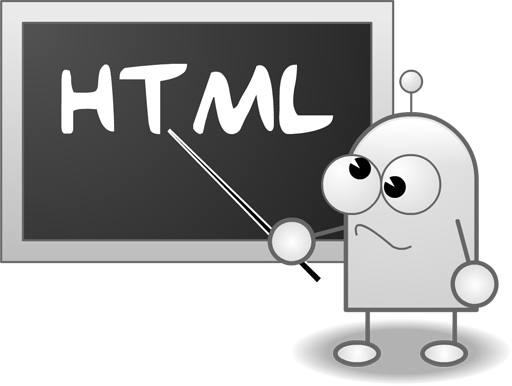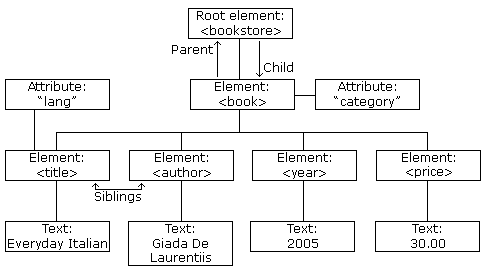INTRODUCTION..!
What is HTML?
HTML is a language for describing web pages.
- HTML stands for Hyper Text Markup Language
- HTML is a markup language
- A markup language is a set of markup tags
- The tags describes document content
- HTML documents contain HTML tags and plain text
- HTML documents are also called web pages
HTML Tags
HTML markup tags are usually called HTML tags
- HTML tags are keywords (tag names) surrounded by angle brackets like <html>
- HTML tags normally come in pairs like <b> and </b>
- The first tag in a pair is the start tag, the second tag is the end tag
- The end tag is written like the start tag, with a forward slash before the tag name
- Start and end tags are also called opening tags and closing tags
Example:<tagname>content</tagname>
HTML Elements
"HTML tags" and "HTML elements" are often used to describe the same thing.But strictly speaking, an HTML element is everything between the start tag and the end tag, including the tags:HTML Element:
HTML Elements
"HTML tags" and "HTML elements" are often used to describe the same thing.But strictly speaking, an HTML element is everything between the start tag and the end tag, including the tags:HTML Element:
Example:<p>This is a paragraph.</p>
-HTTP
-HTML

1.DOCTOTYPE
-Refers to the rules for the markup the language
-Browsers render the content correctly
2.HTML
-Defines the whole HTML documents
3.HEAD
-TITLE element required
-Optional elements
-Base- default address/target for all links on a page
-META- defines metadata about an HTML document
-SCRIPT,NONSCRIPT- define a client-side script(JavaScript)
-STYLE- to define style information for an HTML documents
-LINK- defines the relationship between a document and an external
resources
Example.:
Physical character styles are included of font(it size,colour and face),base font and size.For an example, in html format <b>,<i>,<tt>,<u>,<sub>,<small>,<strike> and etc.
The example of logical character styles that usually being used in html format are:
<em>,<strong>,<code>,<samp>,<kbd>,<dfn>,<var>,<cite>
You may type all of it on the notepad which then being save as html format,that is .html which allow you to open and read it online. The steps are shown as follow:
First step:
Second step:
Third step:
Naming a SECTION
Table Attribute - cellpadding
Table Attribute - rules
HERE!! There is an exercise for you..do you able to do it???
The world Wide Web
Definations
-The
World Wide Web
>The set of computers on the Internet that support HTTP.
>Not a separate network
-HTTP
>The
HyperText Transfer Protocol
>The
language used by a WWW Client to request documents from a WWW server.
-HTML
>The
HyperText Markup Language
>The
language used to design web pages

Main HTML Elements
-TITLE element required
-Title in the browser toolbar, title for the page when its added to favourites and search-engine oages
-Optional elements
-Base- default address/target for all links on a page
-META- defines metadata about an HTML document
-SCRIPT,NONSCRIPT- define a client-side script(JavaScript)
-STYLE- to define style information for an HTML documents
-LINK- defines the relationship between a document and an external
resources
Example.:
Text-Level Elements
The Text-Level Elements can be divided into 3:
- Physical Character Styles
- Logical Character Styles
- Hypertext Links
Physical Character Styles
Logical Character Styles
The example of logical character styles that usually being used in html format are:
<em>,<strong>,<code>,<samp>,<kbd>,<dfn>,<var>,<cite>
Hypertext Styles (Hypertext Links)
- A - For an example: <href>,<name>,<target>
- IMG- For an example: <src>(required),<alt>,<align>,<width>,<height>,<hspace>,<boarder>
- Misc.Text-Level Elements - For an example: BR(Explicit line Break), AREA (Client-side image maps), APPLET (Java)
You may type all of it on the notepad which then being save as html format,that is .html which allow you to open and read it online. The steps are shown as follow:
First step:
 |
| Write html on Notepad |
 |
| Save as html (Text-level Element.html) |
 |
| The result of html (Test-level element) |
Hypertext Links
Link can contain an images and other text-level element.
- Link to Absolute URL- Complete URL beginning with http://
- Link to Relative URL - Use a filename or relative path to file name
- Links to Section - Use a section name preceded by #
- Link to Section in URL -Use relative or absolute URL,then #,then section name
Naming a SECTION
-Use <A Name="....." and do not include the pound sign
IMG : Embedding Images
The IMG allow picture or an image to be upload in the html text.
For an example : <img src="SomeFile.gif" alt="My Cat" width ="400" height="300"
 |
| IMG -The Image Embedded step |
Table Element Attributes
The are a lot of table element attributes that are align,boarder, cell spacing, cell padding,width, BG colour,bordercolor,bordercolordark,bordercolorlight,background, rules and frames.
THE TABLE ELEMENT ATTRIBUTES & ITS SPECIFICATIONS
| Element Attributes | Specifications |
|---|---|
ALIGN
|
|
BORDER
|
|
CELLSPACING
|
|
CELLPADDING
|
|
WIDTH
|
|
BGCOLOR
|
|
BORDERCOLOR,
BORDERCOLORDARK,
BORDERCOLORLIGHT
|
|
BACKGROUND
|
|
RULES
|
|
FRAMES
|
|
The example:
Table Attribute - align (deprecated)
| This table is right aligned |
| Text flows around it to the left |
This is text that is flowing around the table.
Table Attribute - border
| This is a border with a 1px border. |
And here is the second example:
| And this table has a border of 10. |
Table Attribute - cellspacing
| This table has a cellspacing of 20. |
| Cells will be separated by 20 pixels. |
Table Attribute - cellpadding
| This table has a cellpadding of 20. |
| Cells will be separated by 20 pixels. |
Table Attribute - rules
| This 4x4 table has | the rows not columns |
| outlined with the | rules attribute. |
| the more rows | there are |
| the more rules there are | |
And here is an example with the columns highlighted:
| This is | a table | where the |
| columns | are | highlighted |
| not | the | rows |
Table Attribute - frame
| This table | will have |
| only the | left side framed. |
And another example
| This table has a frame on the bottom. |
The Table Elements Attributes Descriptions & Differences Between HTML 4.01 AND HTML 5
| Attribute | Value | Description |
|---|---|---|
| align | left center right | Not supported in HTML5. Deprecated in HTML 4.01.Specifies the alignment of a table according to surrounding text |
| bgcolor | rgb(x,x,x) #xxxxxx colorname | Not supported in HTML5. Deprecated in HTML 4.01.Specifies the background color for a table |
| border | 1 "" | Specifies whether the table cells should have borders or not |
| cellpadding | pixels | Not supported in HTML5. Specifies the space between the cell wall and the cell content |
| cellspacing | pixels | Not supported in HTML5. Specifies the space between cells |
| frame | void above below hsides lhs rhs vsides box border | Not supported in HTML5. Specifies which parts of the outside borders that should be visible |
| rules | none groups rows cols all | Not supported in HTML5. Specifies which parts of the inside borders that should be visible |
| summary | text | Not supported in HTML5. Specifies a summary of the content of a table |
| width | pixels % | Not supported in HTML5. Specifies the width of a table |
Do exactly like this:
 |
| Table example (exercise) |










